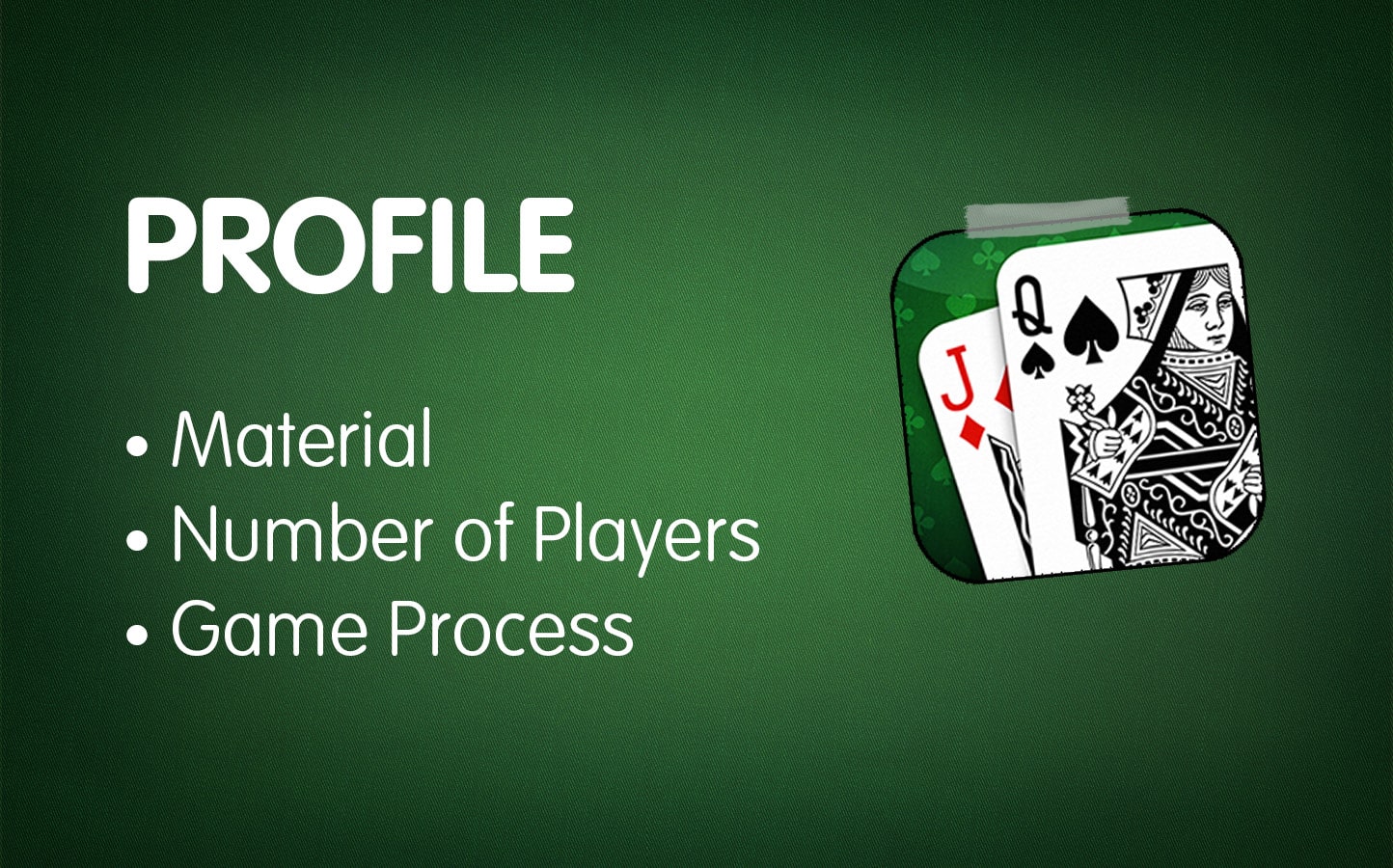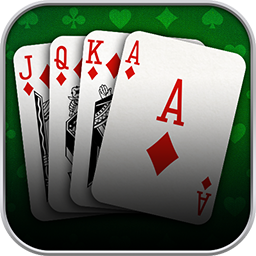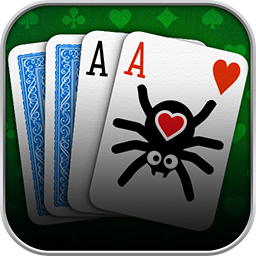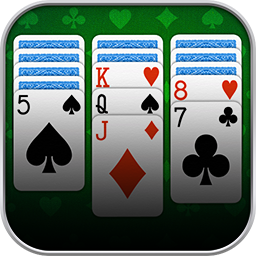Here is the place to get hard facts on Pinochle before going into the game phases melding, bidding, and trick-taking in further lessons. Then, you know what is coming at you, and you can enter the fray prepared!
Read up on the following points in this lesson:
1. Number of Players and Material
Pinochle with three players or four players are the most popular variants. Thus, we offer them at the Pinochle Palace!
The game uses the American card pattern, which comes in French suits. 40 cards are in the game, which is a double-deck. That means that the ascending ranks Jack, Queen, King, Ten, and Ace appear twice in each of the four suits Clubs, Spades, Hearts, and Diamonds. Many players know Pinochle with a bigger deck, where an additional rank – the Seven or the Nine – enters the game as the weakest rank below the Jack.

Your dealer shuffles the cards and passes them out to the players and the kitty. The kitty is a stack of cards that a player can gain to optimize their hand cards. You might recognize that principle from Skat.
| Three Players Basic Game | Three Players Bigger Deck | Four Players Basic Game | Four Players Bigger Deck | |
| Total Cards | 40 | 48 | 40 | 48 |
| Hand Cards per Player | 12 | 15 | 9 | 11 |
| Cards in the Kitty | 4 | 3 | 4 | 4 |
| Manner of Dealing | 4-2-4-2-4 | 5-1-5-2-5 | 3-2-3-2-3 | 4-2-3-2-4 |
The bold number symbolizes the cards that are put aside as the kitty.
Dealing adapts to the number of players and the deck in use. If you are particular about dealing, you can stick to the dealing patterns described in the table above. In a three-player Pinochle game with basic rules, it goes like this: First, each player gets four cards at once. Then, two cards are put aside for the kitty. After that, each player receives four cards, two more for the kitty, and four cards for each player again.
2. Game Type
Pinochle is a trick-taking game. That means a vital part of playing is to go round, pitting hand cards against each other.
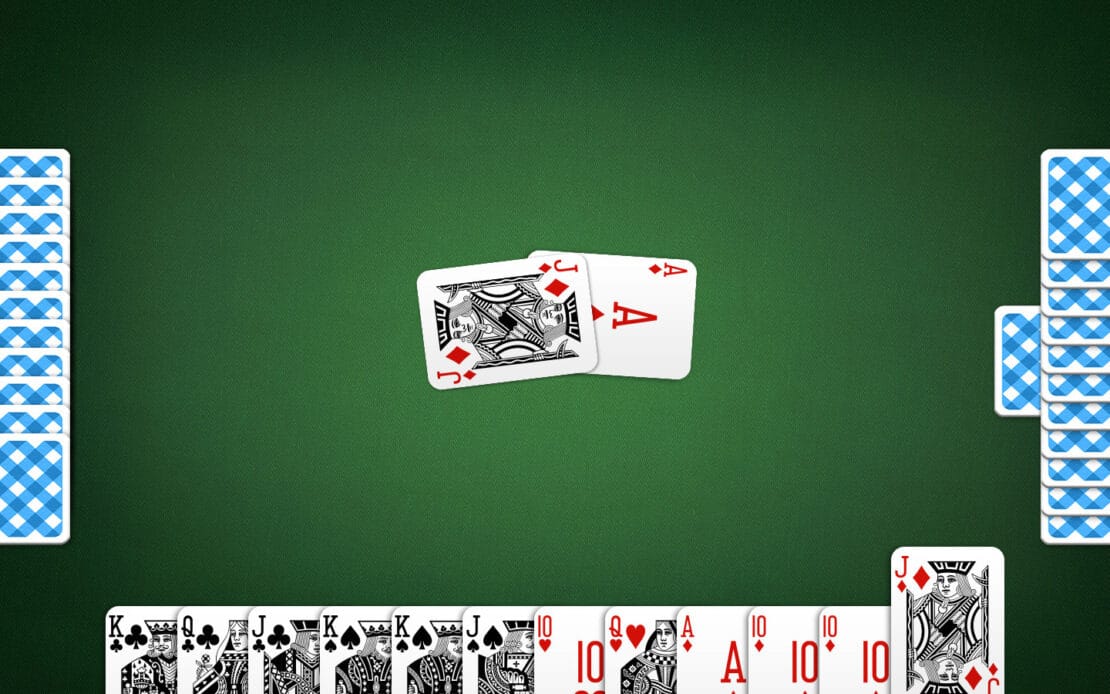
In detail, one player places a card in the center of the table, and the other players each contribute a card, abiding by the Pinochle rules. After everyone contributed a card, we have a trick on the table. Now you check who won the trick. The player contributing the strongest card gets to take all three or four cards and gains points equal to their eye values. Find out how the cards outdo one another in trick-taking in our fourth Pinochle Lesson.
Teamplay or Solo?
In a game of three, everybody collects points for themselves. But Pinochle with four players turns into a game of competing teams! It is often referred to as Cross Pinochle, as the players facing each other make up a team. As a result, the teams cross over one another at the table. The players in a team tally their eyes from gained cards just like their points from melds. If one of them wins the bidding, but the team does not reach the bid value, the penalty affects both players of that team.
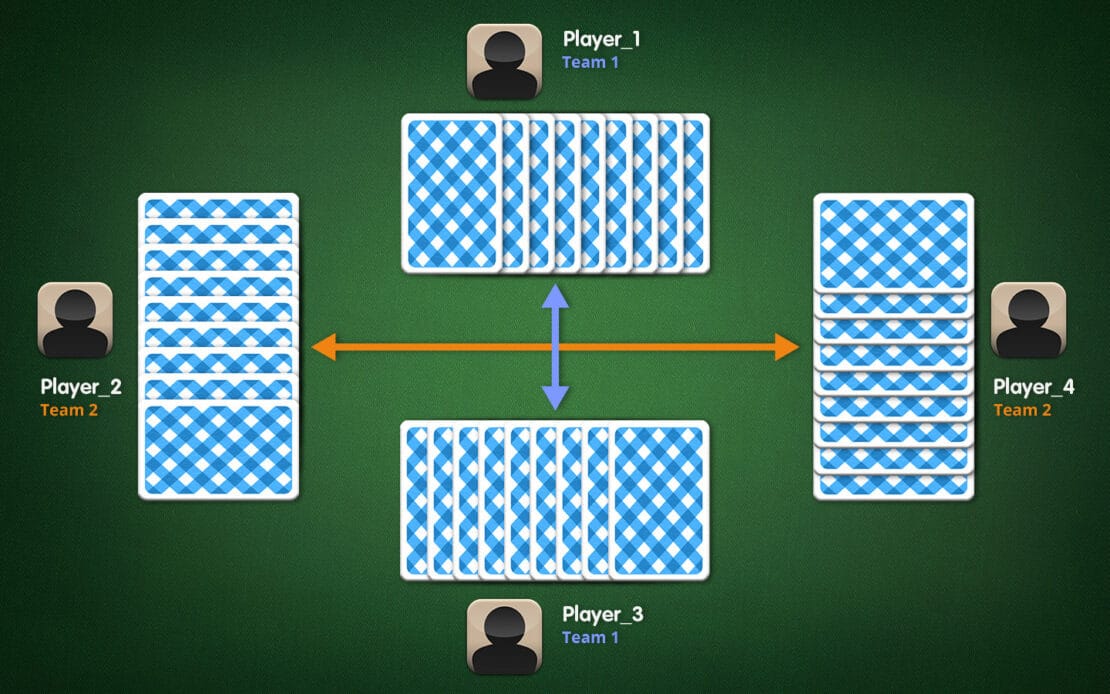
Melds, bidding, penalty? Find out what that is all about in the respective Pinochle Lessons. But here and now, we continue our way through the entire game. That way, you will know where the melds, the bidding, and the penalty belong.
3. The Course of the Game
Each round of Pinochle consists of the same steps. And any step involving all players goes counter-clockwise. If you are playing multiple rounds, the dealer position moves one seat in counter-clockwise fashion in each round, too.


1. Dealing
You assign the dealer at random. The other player positions – forehand, middlehand, and rearhand – result counter-clockwise from the dealer’s.
The dealer distributes the cards, and everybody looks at their own hand cards.
2. Bidding
This is about becoming the declarer of the round. That person gets to determine the trump suit and pick up the kitty. These are powerful means to adjust the game to your hand.
The highest bid value wins, but the score at the end of trick-taking must at least match that number! You will find a more detailed description in our third Pinochle lesson.
Forehand always has to start bidding at the lowest possible value of 150. From here, the next player gets to bid along by tens or pass.
3. Picking up & Discarding the Kitty
Now, the declarer picks up the four cards in the kitty, shows them to all players, and adds them to their hand. Then, they discard any four cards from their hand, keeping them face-down.
4. Declaring
The declarer now declares the trump suit and continues to the next step: melding. If you play with the respective custom rules, you can announce another game mode instead of declaring trump.
Alternatively, you can forfeit your hand. You still must declare the trump suit. After melding you skip trick-taking and directly move on to the slightly modified evaluation.
5. Melding
Here, each player gets the chance to meld specific combinations of hand cards. That means each player briefly lays down the combined cards for all to see and reserves the associated scores. Then, the cards go back to the hand.
You will only receive your reserved meld points when you win at least one trick during trick-taking! More on Melding in our next lesson.
6. Trick-Taking
This step always starts with the forehand. Everybody plays one card in counter-clockwise order. The strongest card wins the trick, and the winner begins the next trick. You continue this process until all hand cards are used up. The fourth lesson focuses on this topic.
7. Evaluation
First, you check if the declarer reached the bid value, if applicable, with their partner. To do so, all points are tallied and rounded up or down to the next tenner.
If they missed the goal, they would get penalty points. In a game of four, that also goes for their partner!
But if the declarer succeeded, they or their team won the round.
The opponents receive their respective eye values and points from melds either way. And finally, you note each player’s individual scores. After that, you can move right along to the next round.
That was just an overview of the cornerstones of Pinochle. In the future, we will delve into individual elements of the game and the occasional alternate rule set. The next lesson will deal with melding and its benefits for you.
